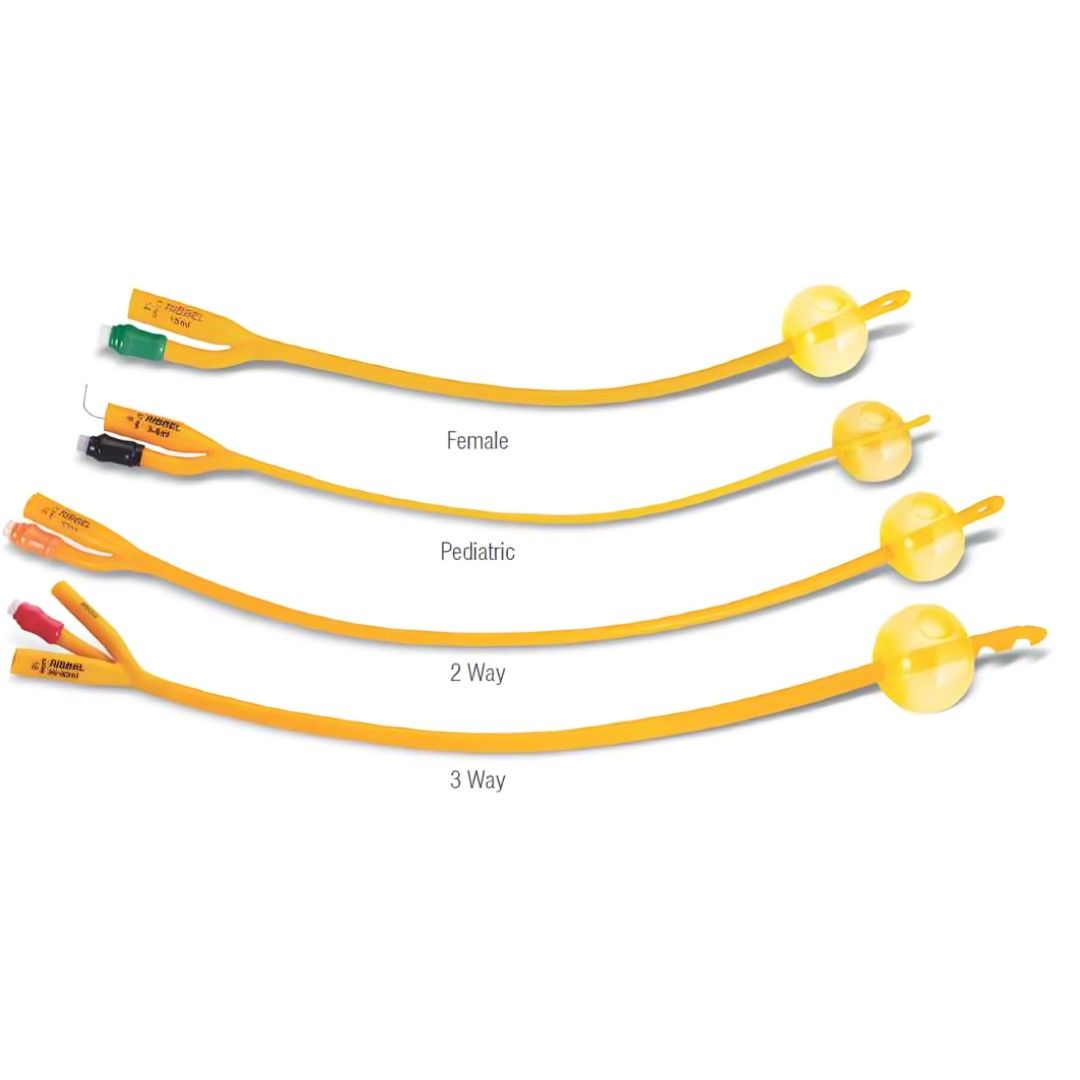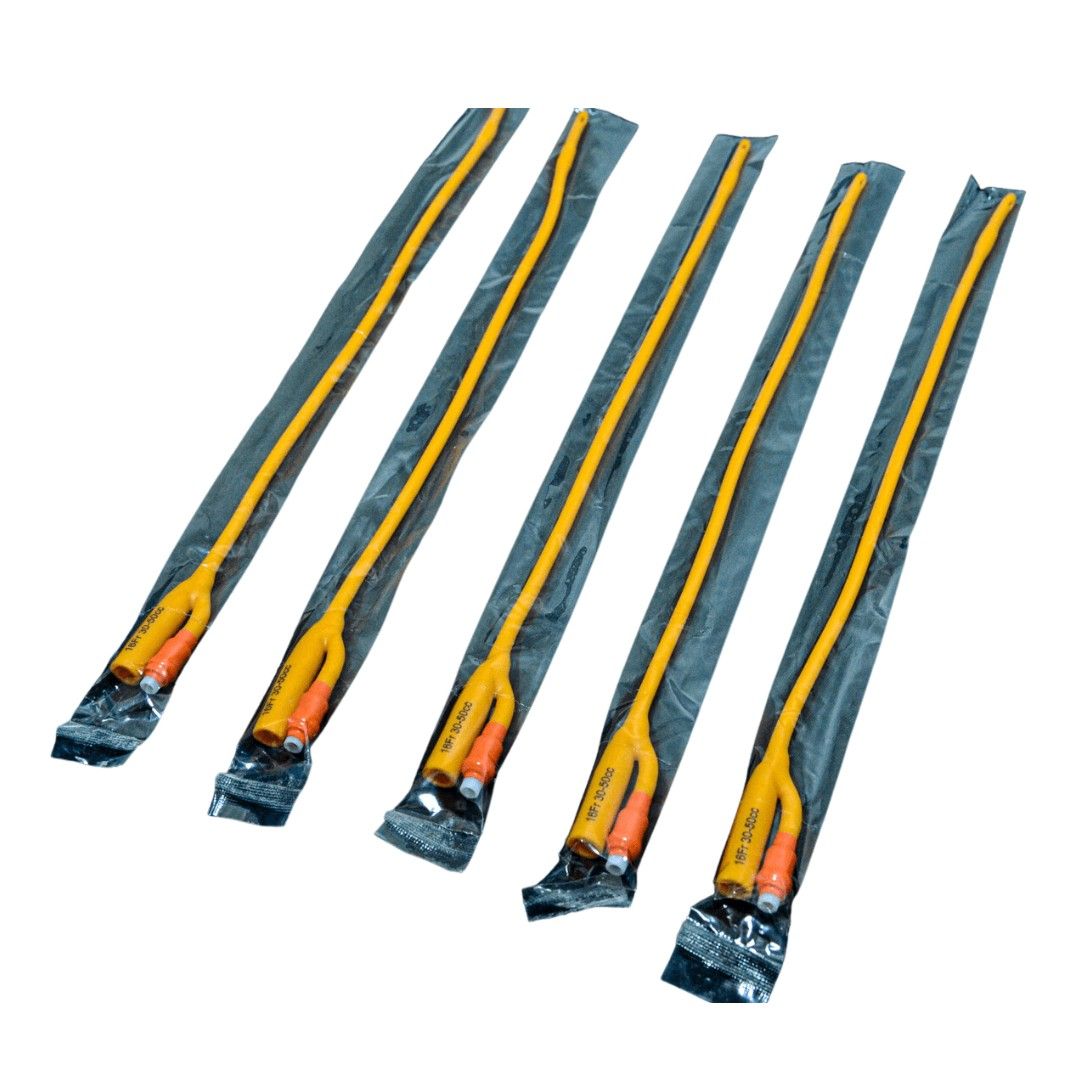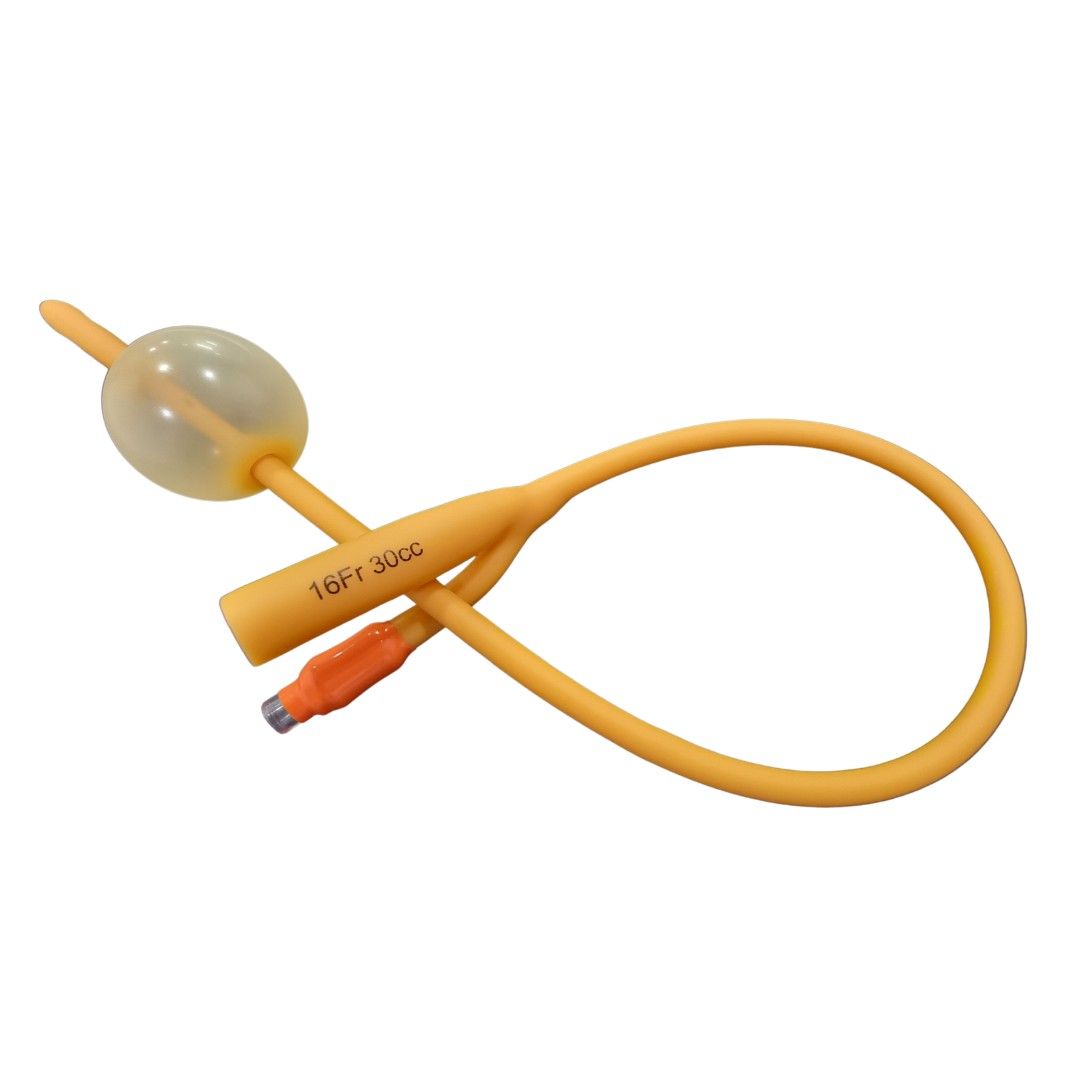Balloon catheters are medical devices used in various procedures, such as angioplasty and catheterization, to treat and diagnose cardiovascular conditions. These catheters feature an inflatable balloon at the tip, which can be expanded or inflated to open blocked blood vessels or perform other medical interventions. This buying guide aims to provide a comprehensive overview of balloon catheters, including their types, sizes, manufacturers, usage, safety considerations, and disposal. Whether you are a healthcare professional or a purchaser looking to procure balloon catheters, this guide will help you make informed decisions.
Understanding Balloon Catheters
Balloon catheters, also known as intravascular balloon catheters, are essential tools in modern medicine. They are commonly used in procedures such as angioplasty, balloon dilation, and balloon occlusion. The primary purpose of a balloon catheter is to open up blocked or narrowed blood vessels, improve blood flow, and restore normal bodily functions.
Significance of Balloon Catheters
The significance of balloon catheters in modern medicine cannot be overstated. These devices have revolutionized cardiovascular interventions and have become indispensable tools for healthcare professionals. Here are some key reasons highlighting the significance of balloon catheters:
- Minimally Invasive Procedures: Balloon catheters have played a pivotal role in advancing minimally invasive procedures, particularly in the field of interventional cardiology. Instead of resorting to open-heart surgery or major invasive interventions, balloon catheters allow for less traumatic procedures, resulting in reduced patient discomfort, shorter recovery times, and lower healthcare costs.
- Angioplasty and Vascular Dilation: Balloon catheters are extensively used in angioplasty procedures to treat conditions such as coronary artery disease and peripheral arterial disease. By inflating the balloon within the narrowed or blocked blood vessels, they help restore blood flow and improve organ perfusion. This non-surgical approach has transformed the management of cardiovascular conditions and has significantly improved patient outcomes.
- Increased Precision and Accuracy: Balloon catheters are designed to provide precise control during interventions. The ability to inflate and deflate the balloon at specific locations within the blood vessels allows healthcare professionals to target and treat specific areas more accurately. This level of precision enhances the effectiveness of the procedures while minimizing the risk of damage to surrounding tissues.
- Versatility and Adaptability: Balloon catheters come in various types, sizes, and designs to accommodate different clinical scenarios. Whether it’s treating a blocked coronary artery or a peripheral blood vessel, or performing procedures like balloon dilation or embolectomy, there is a suitable balloon catheter available for each specific purpose. This versatility makes them applicable across a wide range of medical specialties.
- Safer Alternatives: Balloon catheters have provided safer alternatives to traditional surgical interventions. By avoiding the need for major surgical incisions, they reduce the risks associated with open surgeries, such as infections, bleeding, and longer hospital stays. Furthermore, balloon catheter procedures can often be performed under local anesthesia, eliminating the need for general anesthesia and its associated complications.
- Improved Patient Outcomes: The advent of balloon catheters has significantly improved patient outcomes in cardiovascular care. By promptly restoring blood flow and relieving arterial blockages, balloon catheters minimize the risk of complications such as heart attacks, strokes, and tissue damage. They also help alleviate symptoms and improve the overall quality of life for patients with cardiovascular diseases.
- Ongoing Technological Advancements: The field of balloon catheters continues to advance rapidly with ongoing technological innovations. Manufacturers are continuously developing new materials, designs, and features to enhance the performance, safety, and efficacy of these devices. These advancements contribute to improved patient care and outcomes by allowing for more precise interventions and reducing potential complications.
Types of Balloon Catheters
Balloon catheters come in various types, each designed for specific applications. Some common types of balloon catheters include:
- Angioplasty Balloon Catheter: This type of catheter is used in angioplasty procedures to treat coronary artery disease. It helps widen the narrowed or blocked arteries, allowing improved blood flow to the heart.
- Peripheral Balloon Catheter: Peripheral balloon catheters are used to treat peripheral arterial disease, which affects blood vessels outside the heart. These catheters help clear blockages in arteries located in the arms, legs, or other peripheral regions of the body.
- PTCA Balloon Catheter: PTCA (percutaneous transluminal coronary angioplasty) balloon catheters are specifically designed for coronary artery dilation. They are used in balloon angioplasty procedures to restore blood flow in the coronary arteries.
- Fogarty Balloon Catheter: Fogarty balloon catheters are commonly used for embolectomy procedures, which involve removing blood clots or foreign objects from blood vessels.
- Double Lumen Balloon Catheter: Double lumen balloon catheters feature two separate lumens, enabling simultaneous inflation and deflation of the balloon. They are often used in complex cardiovascular interventions.
- Single Lumen Balloon Catheter: Single-lumen balloon catheters have a single lumen for inflating and deflating the balloon. They are versatile and used in various angioplasty and catheterization procedures.
Considerations for Balloon Catheter Selection
- Sizes: These devices are available in various diameters and lengths to accommodate different anatomical structures and procedural requirements. Choosing the appropriate size is crucial to ensure optimal performance and patient safety.
- Price: Balloon catheter prices can vary depending on factors such as brand, type, and size. Consider budget constraints while ensuring quality and reliability.
- Clinical Compatibility: Verify compatibility with other equipment and devices that will be used during the procedure, such as guide wires, sheaths, or imaging systems. Ensure seamless integration and smooth workflow during the intervention.
- Performance: Assess the performance characteristics of the balloon catheter, such as inflation/deflation capabilities, balloon material, and inflation pressure range. Opt for balloon catheters that offer precise control, reliable inflation, and consistent performance.
- Safety Features: Consider safety features incorporated into the design, such as radiopaque markers for enhanced visibility during fluoroscopy or X-ray imaging.
- Regulatory Compliance: Ensure that the balloon catheter complies with relevant regulatory standards and certifications such as ISO 13485, to ensure manufacturing consistency and product reliability.
- Reputation and Supplier Reliability: Research the reputation and track record of the balloon catheter manufacturer. Seek feedback from colleagues or trusted sources regarding the manufacturer’s product quality, customer support, and overall reliability.
Balloon Catheter Usage and Safety Considerations
- Balloon Catheter Insertion: Proper insertion technique is crucial to ensure optimal positioning and functioning of the balloon catheter. Healthcare professionals should follow standardized protocols and guidelines for safe and accurate insertion.
- Balloon Catheter Removal: Once the procedure is complete, balloon catheters should be carefully removed to prevent any damage or complications. Proper removal techniques, as recommended by the manufacturer or healthcare professionals, should be followed.
- Balloon Catheter Complications: Although balloon catheters are generally safe, there can be potential complications associated with their usage. These may include vessel damage, thrombosis, infection, balloon rupture, or allergic reactions. It is vital to be aware of these risks and take appropriate precautions during the procedure.
- Balloon Catheter Safety: Ensuring patient safety is paramount when using balloon catheters. Adhering to sterile techniques, maintaining a sterile environment, and following infection control measures are essential to prevent complications and improve patient outcomes.
- Balloon Catheter Storage and Sterilization: Proper storage conditions and sterilization processes should be followed to maintain the integrity and safety of balloon catheters. Manufacturers often provide specific instructions on storage requirements and sterilization methods, which should be strictly adhered to.
- Balloon Catheter Reuse and Disposal: It is generally recommended to use balloon catheters as single-use devices to minimize the risk of infection and maintain optimal performance. If reusable catheters are used, thorough cleaning, sterilization, and compliance with regulatory guidelines for reprocessing should be ensured. Proper disposal methods, adhering to biohazard waste regulations, must be followed for used catheters.
Spotlight On Ribbel International Limited
Ribbel International Limited, established in 1992 and headquartered in Delhi, India, is a leading manufacturer of high-quality medical disposables and consumables. With over 100 employees and an annual turnover exceeding 15 million USD, the company exports products worth between 3 to 10 million USD to regions including Oceania, the Middle-East, CIS nations, South America, North America, Europe, Africa, and Asia. Certified by TGA, ISO 13485, FDA, and EU CE, Ribbel is committed to maintaining international quality and safety standards. Specializing in products such as foley balloon catheters, surgical blades, safety scalpels, stitch cutters, gouge blades, curettes, kidney trays, endotracheal tubes, medical blades, urine bags, knives, keratomes, spirometry machines, and surgical trays, Ribbel has built a reputation for integrity, continuous improvement, and customer satisfaction, earning a loyal customer base in 85 countries.
SILKYGOLD
Among Ribbel’s notable products is the SilkyGold Urinary Catheter. This high-quality catheter, certified by the FDA, ISO 13485, and EU CE, is designed for drainage with options for 2-way, Foley (indwelling urinary), and 3-way use. Key features include smooth, optimal eyes for atraumatic introduction and effective drainage, a kink-resistant drainage funnel, a pressure-resistant balloon, a large drainage lumen, siliconized for smooth passage, and a reinforced shaft to prevent collapse during suctioning. The SilkyGold catheter is exported to various global markets, including the USA, Turkey, South Africa, the Philippines, France, Thailand, Singapore, Ethiopia, and Tanzania.
Ribbel’s All Silicon Foley Balloon Catheter
Another prominent product is the All-Silicon Foley Balloon Catheter. Made from 100% silicone, this catheter provides ultimate comfort for long-term use and eliminates the risks associated with repeated latex exposure. Certified by the FDA, ISO 13485, and EU CE, the catheter features transparent silicone for easy visualization, a hydrophilic coating for enhanced lubrication, a rounded sealed tip, and a color-coded hard valve. Each catheter is individually packed in sterile blister packs. The All-Silicon Foley Balloon Catheter is also exported to the USA, Turkey, South Africa, the Philippines, France, Thailand, Singapore, Ethiopia, and Tanzania.
Ribbel International Limited is a reputable and well-established manufacturer of medical disposables and consumables. With a strong focus on quality, customer satisfaction, and continuous improvement, they offer a range of high-quality products, including the SilkyGold and All-Silicon Foley Balloon Catheters. Their global reach and commitment to excellence make them a reliable partner in the healthcare industry.
Spotlight On Sterile World Technologies LLP (SWT)
Sterile World Technologies LLP (SWT), established in 2011 and based in Maharashtra, India, is a reputable manufacturer of sterilization solutions and medical devices. Operating under an ISO class-8 environment, SWT adheres to the highest quality standards, following EN ISO 11607 and EN 868-2 guidelines. The company holds ISO 9001 and ISO 13485 certifications, reflecting their commitment to quality management and product excellence. With a team size of 10 to 50 employees and an annual turnover of up to 1.5 million USD, SWT exports products to various regions, including Asia, Oceania, the Middle-East, CIS nations, South America, North America, Europe, and Africa. SWT’s product categories include sterilization pouches, rolls, and bags, which are essential for maintaining the integrity and safety of medical equipment and supplies.
LIFER Foley Catheter
Among their notable products is the LIFER Foley Catheter, a top-quality indwelling catheter designed to efficiently drain urine from the bladder. Certified by ISO 9001 and ISO 13485, the LIFER Foley Catheter is crafted from durable silicone or latex material and is intended for single use, ensuring optimal hygiene and safety. The catheter features a balloon at the end that can be filled with sterile water, securely anchoring it within the bladder and providing extended comfort to patients. This product is particularly accessible to customers in South Africa, Nigeria, and Kenya, among other regions.
Sterile World Technologies LLP (SWT) is a trusted manufacturer of sterilization solutions and medical devices, committed to quality, innovation, and customer satisfaction. Their extensive range of products, including the LIFER Foley Catheter, meets international standards and is widely used across the globe. SWT’s dedication to excellence and significant global presence make them a reliable partner in the healthcare industry.
Spotlight On Nishi Medcare
Nishi Medcare, established in 2012 and based in Maharashtra, India, is a reputable manufacturer of high-quality hospital consumables and surgical disposables. Operating under the brand name SURGIPAL, Nishi Medcare is certified with ISO 13485 and EU CE, ensuring compliance with international standards. With a team of 10 to 50 employees and an annual turnover between 1.5 to 15 million USD, the company exports products worth 1 to 3 million USD to regions such as the Middle-East, CIS nations, Europe, Africa, and Asia. Nishi Medcare’s product range includes surgical gloves, examination gloves, Foley balloon catheters, delivery kits, umbilical cord clamps, medical caps and headcovers, surgical gowns, medical wear, breathing circuits, medical tubing kits, oxygen and nebulizer masks, mucus extractors, suction units, and PPE kits.
Foley Balloon Catheter
Among their notable products is the Foley Balloon Catheter, designed for urinary catheterization to provide comfort and ease of use for both patients and healthcare professionals. Certified by ISO 13485 and EU CE, this high-quality catheter is adept at efficiently draining urine from the bladder. It features a balloon that can be filled with sterile water to securely anchor it within the bladder, ensuring extended comfort for patients. This product is particularly accessible to customers in South Africa, Nigeria, and Kenya, among other regions.
Nishi Medcare is a trusted manufacturer of surgical disposables and healthcare products, with a strong focus on quality, customer satisfaction, and continuous improvement. Their extensive range of products, including the Foley Balloon Catheter, meets international standards and is widely used across the globe. Nishi Medcare’s dedication to excellence and significant global presence make them a reliable partner in the healthcare industry.
Other Top Manufacturers of Balloon Catheters
The market for balloon catheters is served by several reputable manufacturers. Here are some notable manufacturers of balloon catheters:
- Advanced LifeSciences Pvt. Ltd. (ALSPL)
- Advanced MedTech Solutions Pvt Ltd
- Angiplast Private Limited
- ASKP SOLUTIONS
- Disposafe Health and Life Care Ltd.



